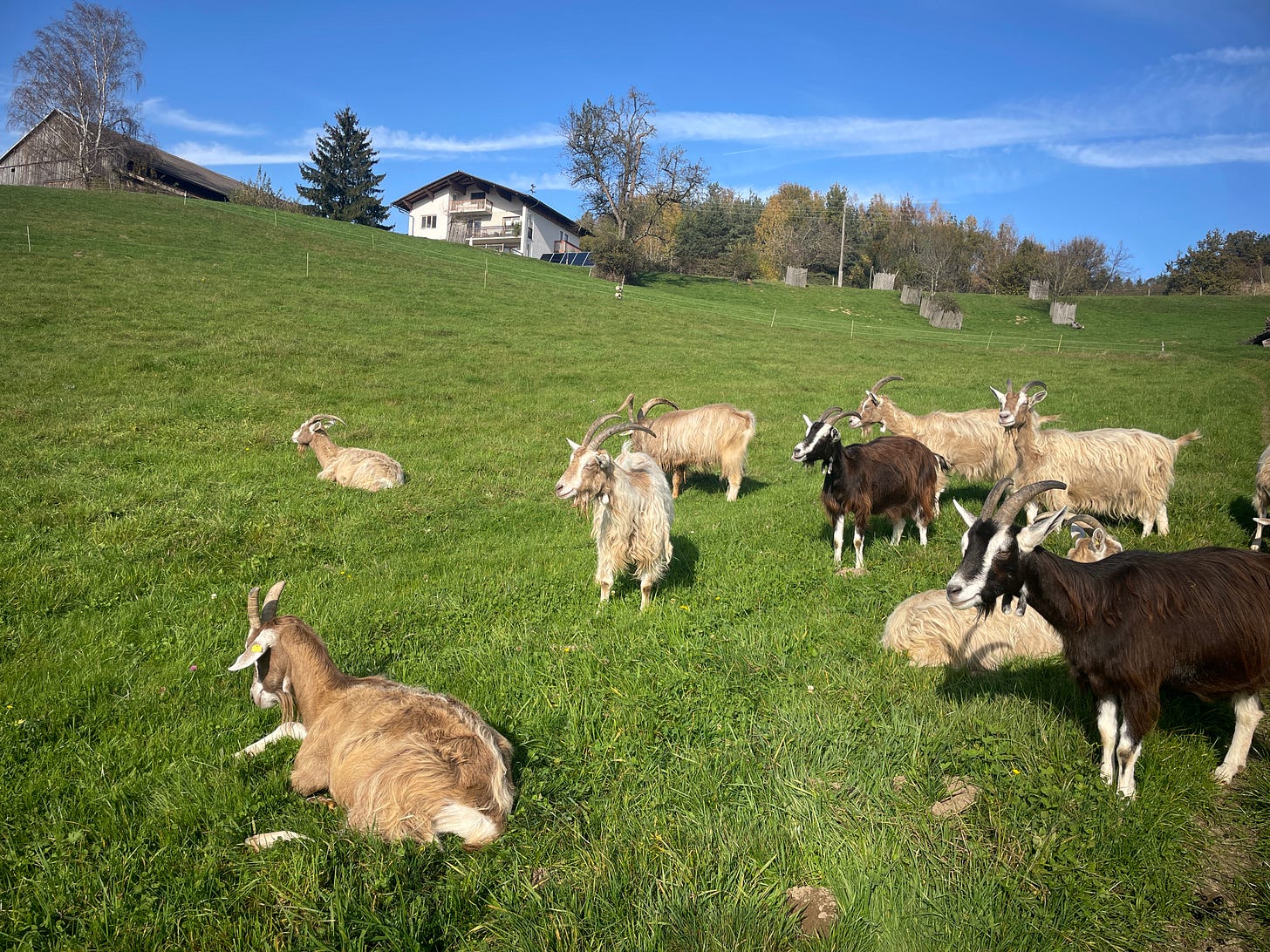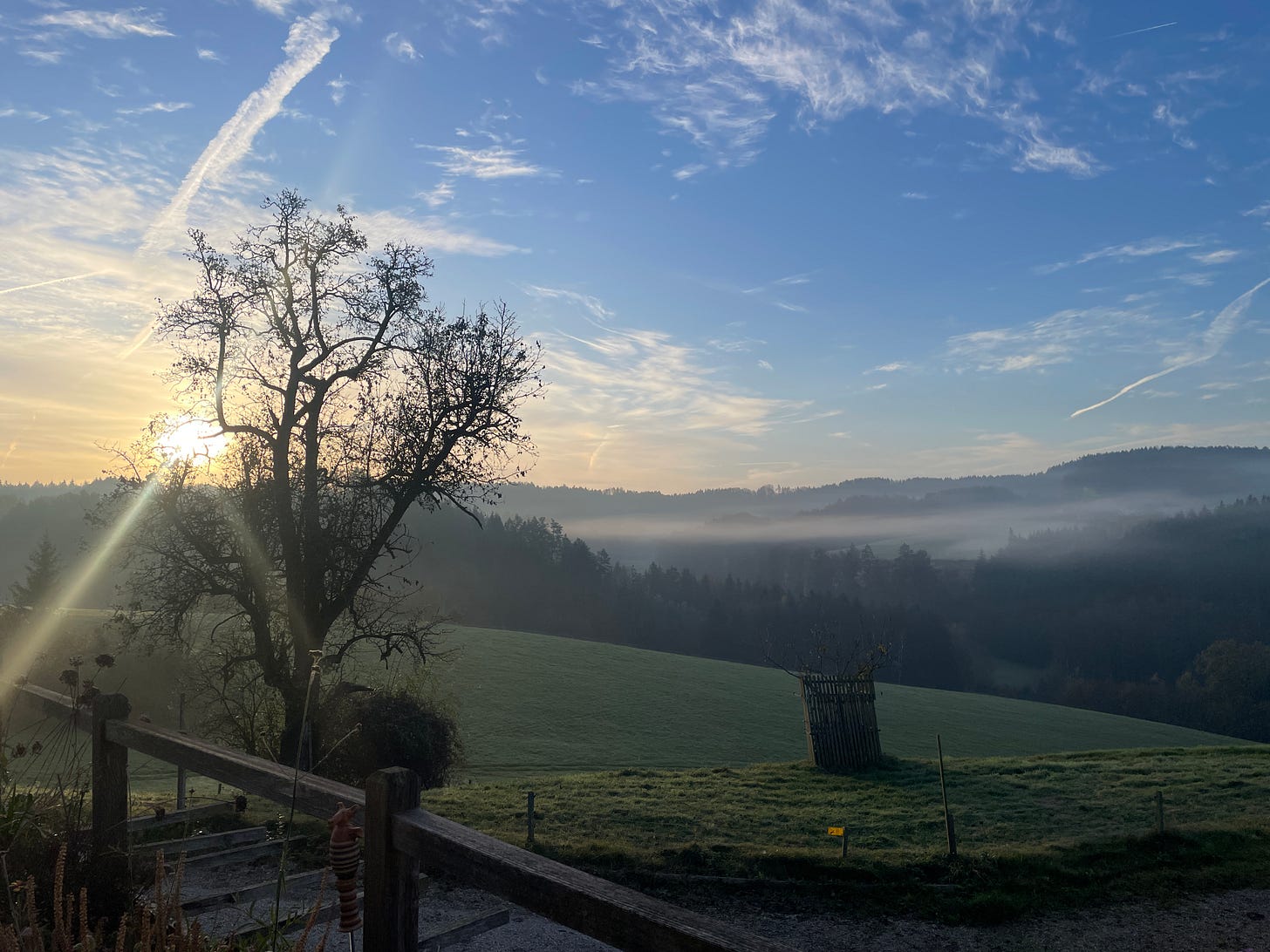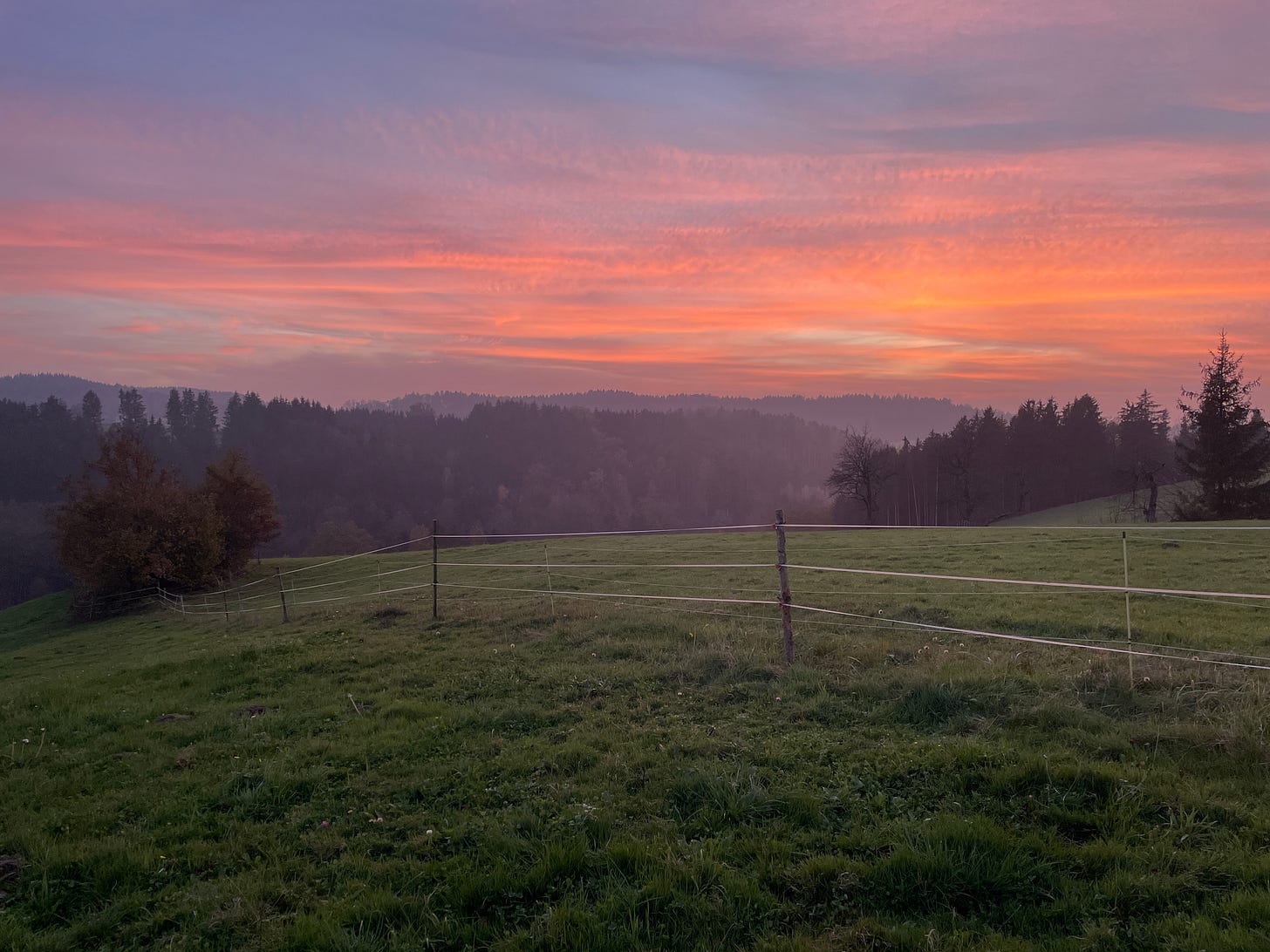After two years of volunteering and working on cheesemaking farms, the beginning of this year felt strange. As February came around, it was often on my mind how any day now goat kids will start jumping around in the barns. I was thinking about all the new life spring brings along, and the start of another cheesemaking season, all while I was in a dormitory in Warsaw. Not that I’m complaining, it’s only that I got so used to the lifestyle and routine on a farm, it took some time to adjust to the new reality. Luckily, it won’t be a full year before I visit another goat farm.
After the first week of staying in Katzelsdorf, my old friend and I traveled to the other side of Austria and arrived at a farm in Eigelsberg, near the border with Germany. It’s a goat farm with a lovely story. Run by a nice elderly couple (the epitome of couple goals) who gradually reduced the number of goats from 85 to 25. The classic situation: the wife makes the cheese and the husband takes care of the animals. My friend and I are here so they can go on vacation. We are so-called “farm sitting”. As it is the end of the season, there is little work to be done. Plus, my friend already knows this farm and on top of that she’s a veterinarian. This makes the whole experience almost like a vacation also for us.
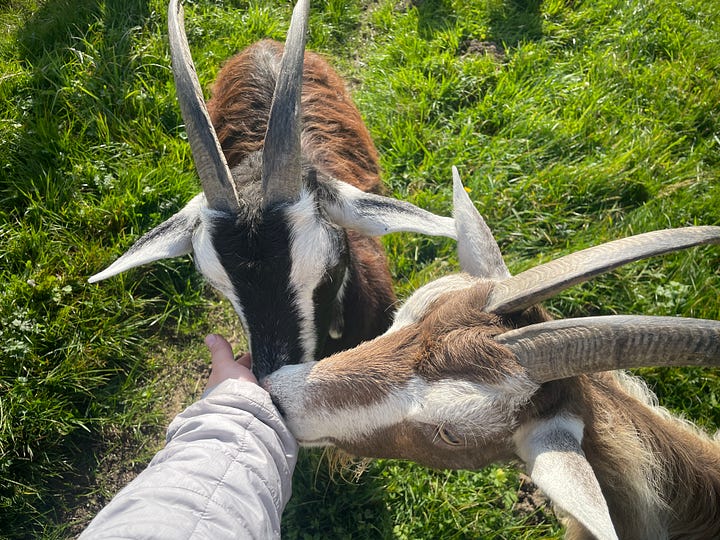

It’s been pleasant getting to know the farmers and hearing about the story of their farm. It was very interesting talking to them also because they are thinking about adding some tourism activities to the existing agricultural ones. As they are slowly reducing the workload with the animals and cheesemaking, they are considering renting an apartment to tourists. As I’ve often found during my years of interacting with farmers and with tourists on farms, that decision rarely comes from an altruistic background, for example, wanting to educate tourists about the farm lifestyle and food production. The reason is often struggling to keep up with the costs of agricultural inputs which are rarely proportional to the selling prices of agricultural products. It seems that in order to survive as a small farm, one has to include tourism, in some way.
Of course, there are many benefits of tourism being part of the activities on a farm. It can also be very fulfilling to interact with tourists who are genuinely interested in what the farmers do, whilst still being able to “read the room” and respect the farmer’s job. Based on experiences, it’s surprisingly rare to have such visitors. It seems that tourists often visit a farm with this sense of “everything is allowed” and “of course we can touch and try everything”. It’s actually impressive what kind of problems can come up from having tourists around the farm. Even the most creative minds would struggle to think of all.
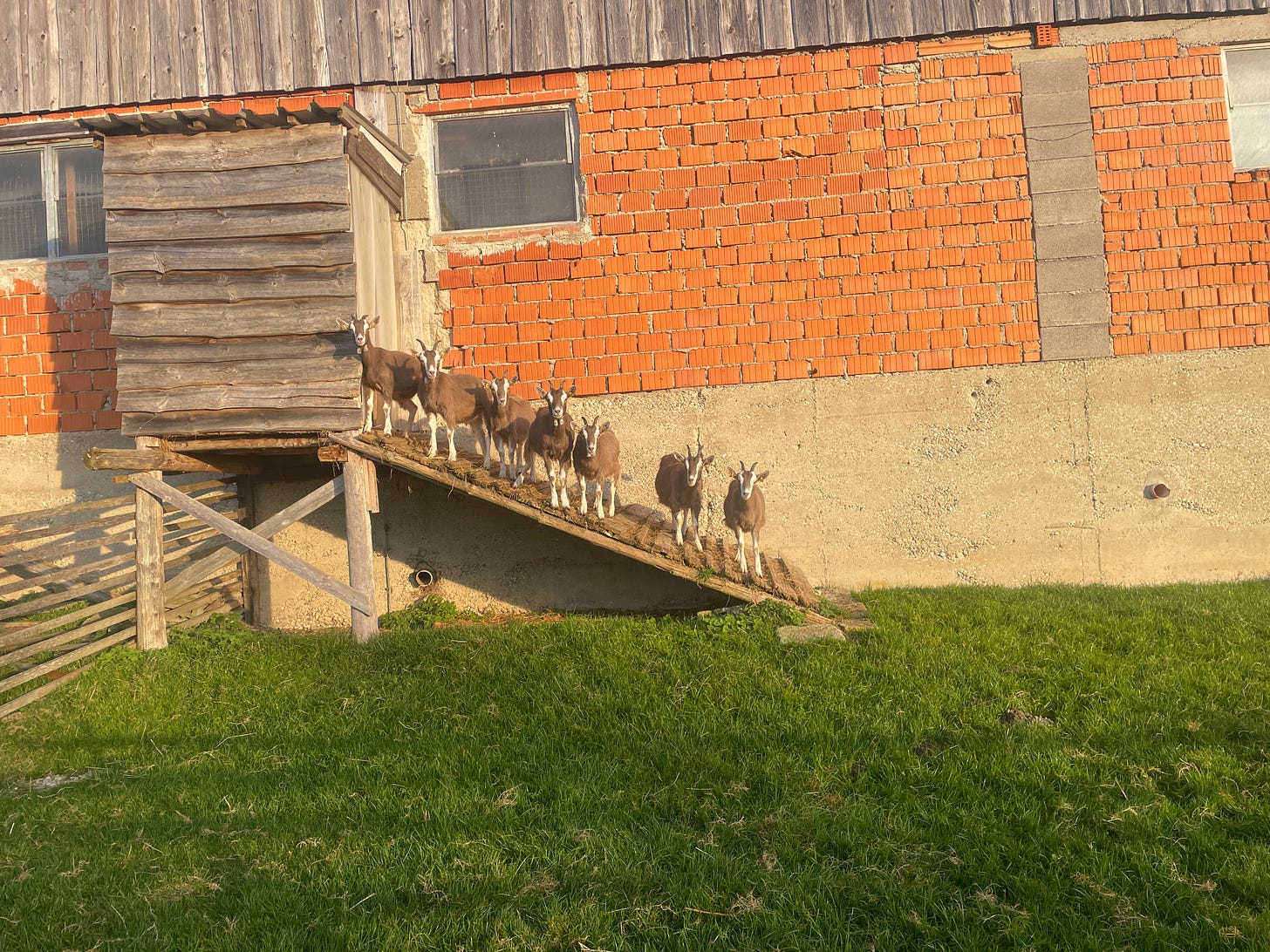
Needless to say, I had some suggestions from firsthand experiences for the farmers who are considering the diversification into agritourism. For example, having a list of rules needs to become a standard on any farm just as it is a norm in every hotel and apartment. Seeing different realities is a big part of why I’m visiting agritourism farms, to find out in what way they have included tourism activities and how that is working out. To end this post on a positive note, below is a video of the newest sourdough bread made with the starter from my friend’s housemate. Naturally, we had to bring the starter with us to Eigelsberg. Can’t properly enjoy anything without good bread.



